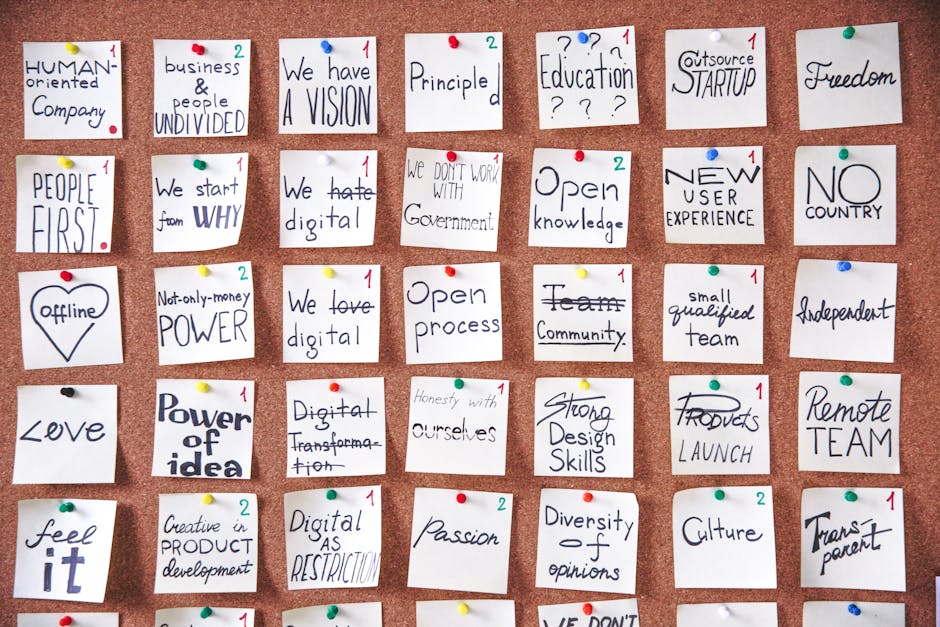From Survivalist to Innovator: Transforming Necessity-Driven Businesses into Tech-Enabled Ventures
‘I started selling vetkoek by the taxi rank because I needed to feed my children. I never imagined I’d one day run a tech-enabled food business serving corporate clients across Johannesburg.’
This is how Dikeledi begins her story – one that exemplifies a powerful but often overlooked transformation happening across South Africa. Entrepreneurs who started businesses out of pure necessity are increasingly embracing technology to scale beyond survival into genuine innovation.
It’s a journey I’ve been privileged to witness repeatedly while working with small business owners across the country. The transition from survivalist enterprise to tech-enabled venture represents one of South Africa’s most promising economic opportunities.
The Survivalist Starting Point

Let’s begin by acknowledging an economic reality: approximately 70% of South African small businesses start as ‘necessity entrepreneurship’ rather than ‘opportunity entrepreneurship.’
What does this mean?
| Necessity Entrepreneurship | Opportunity Entrepreneurship |
|---|---|
| Started to meet basic needs | Started to capitalize on market gap |
| Focus on immediate income | Focus on growth and scaling |
| Limited planning horizon | Long-term strategic vision |
| Based on accessible skills | Based on specialized capabilities |
| Minimal initial investment | Often requires startup capital |
According to research from the Small Enterprise Development Agency (SEDA), necessity-driven businesses have historically shown lower growth rates, employ fewer people, and incorporate less innovation than their opportunity-driven counterparts.
But that pattern is changing.
Why This Transformation Matters

The economic potential of transitioning survivalist businesses into innovative ventures is staggering:
- South Africa has an estimated 5.6 million small businesses
- Over 3.5 million could be classified as ‘survivalist’
- Even modest technology adoption could potentially double their income
- Scaled ventures create 5-10x more jobs than survivalist enterprises
- Tech-enabled businesses show significantly better resilience during economic downturns
Case Study: From Spaza to Digital Marketplace
Soweto entrepreneur Thabo started with a small spaza shop serving his immediate community. After participating in a digital skills program, he created a WhatsApp ordering system that expanded his customer base beyond walking distance.
Within 18 months, he had:
- Increased revenue by 340%
- Expanded from 1 to 7 employees
- Added delivery services to 5 surrounding communities
- Begun aggregating products from other small vendors
Today, his ‘Kasi Convenience’ app serves over 3,000 customers and provides digital market access for 23 previously informal vendors.
‘I never thought of myself as a tech entrepreneur,’ Thabo explains. ‘I just kept finding ways technology could solve problems in my business.’
The Six Stages of Business Transformation

Through observing hundreds of successful transitions, I’ve identified six distinct stages that characterize the journey from survivalist to tech-enabled innovator:
Stage 1: Digital Communication Adoption
The journey typically begins with adopting digital communication tools:
- Using WhatsApp Business for customer orders
- Creating simple Facebook pages for visibility
- Accepting mobile payments via services like Yoco
- Building customer databases in basic spreadsheets
These steps require minimal technical knowledge but immediately expand business reach and efficiency.
‘When I started accepting SnapScan payments, my daily sales increased by 40% overnight,’ recalls Cape Town food vendor Nomsa. ‘Many customers simply didn’t carry cash, and I’d been losing those sales without realizing it.’
At this stage, the focus remains on improving the existing business rather than transformational change.
Stage 2: Operational Systematization
As digital communication creates growth, entrepreneurs naturally begin systematizing operations:
- Developing consistent production processes
- Creating basic inventory management systems
- Implementing simple customer relationship tracking
- Standardizing pricing and offerings
This systematization doesn’t necessarily require advanced technology, but it creates the foundation for later tech integration.
‘I realized I couldn’t keep all my customer information in my head anymore,’ explains Durban service provider Samuel. ‘Creating even a simple Excel system forced me to think more clearly about my business.’
This stage is critical because it shifts thinking from day-to-day survival to medium-term operations.
Stage 3: Digital Marketing Expansion
With basic systems in place, entrepreneurs begin more deliberately expanding their digital footprint:
- Building proper websites (often using platforms like WordPress)
- Implementing strategic social media marketing
- Experimenting with targeted digital advertising
- Developing content that demonstrates expertise
This stage significantly expands market reach beyond local geography.
‘My handmade jewelry business was limited to weekend markets until I built my website,’ shares Pretoria entrepreneur Lerato. ‘Now 70% of my sales come from other provinces, and I’ve even shipped internationally.’
For advice on establishing effective online presence, check out Essential Design Tips for Your Startup’s Website and Branding.
Stage 4: Product/Service Digitization
This transformation stage involves reimagining aspects of the core offering in digital form:
- Creating digital products complementing physical offerings
- Implementing online booking/ordering systems
- Developing mobile apps for customer convenience
- Using digital tools to customize products/services
‘I started as a traditional tutor meeting students at libraries,’ explains educational entrepreneur Thandi. ‘Now my digital learning platform serves 400 students across the country. Same teaching skills, completely different business model.’
This stage often requires technical partnerships or sweat equity arrangements to execute effectively.
Stage 5: Business Model Innovation
With digital capabilities established, entrepreneurs begin fundamentally reimagining their business models:
- Moving from product sales to subscription services
- Creating platform models connecting multiple parties
- Developing data-driven offerings from customer insights
- Implementing digital automation of key processes
‘I realized my real value wasn’t delivering vegetables but organizing the connection between small farmers and urban consumers,’ notes Johannesburg entrepreneur Mandla. ‘That insight transformed us from a delivery service into a platform business with much higher growth potential.’
This stage represents the transition from digital adoption to true innovation.
Stage 6: Scalable Tech Venture
In the final transformation stage, the business evolves into a genuine tech venture:
- Building proprietary technology assets
- Establishing scalable digital infrastructure
- Implementing data-driven decision making
- Often raising capital for accelerated expansion
‘Today we’re a technology company that happens to work in the food sector, not a food business that uses technology,’ explains former street food vendor Zithobile, who now runs a food-tech platform operating in three provinces.
At this stage, the business has completed its transformation from survivalist to opportunity-driven innovation.
The Four Enablers of Successful Transformation

What separates businesses that successfully make this transition from those that stagnate? Four key enablers emerge consistently:
1. Digital Skills Development
Successful transformations begin with deliberate skills acquisition:
- Formal digital skills training programs
- Self-directed online learning
- Peer mentorship from more digitally-advanced entrepreneurs
- Focused workshops addressing specific business needs
‘I committed to learning one new digital skill every month,’ shares retailer Joseph. ‘Some were simple like setting up Google My Business, others more complex like email marketing automation. But the consistent learning compounded powerfully.’
The most effective learning models are highly practical, business-focused, and immediately applicable to current operations.
2. Staged Technology Investment
Rather than overwhelming technology adoption, successful transitions follow a staged investment approach:
- Beginning with free or low-cost tools
- Reinvesting a fixed percentage of revenue into technology
- Prioritizing technologies with immediate ROI
- Gradually increasing sophistication as business grows
‘I established a simple rule: 10% of all revenue would go to technology investment,’ explains manufacturing entrepreneur Bongi. ‘That forced me to choose technologies that would pay for themselves quickly.’
This approach creates a sustainable technology adoption cycle without requiring large upfront investment.
3. Strategic Partnerships
Almost every successful digital transformation involves strategic partnerships:
- Technical partners providing development expertise
- Digital marketing collaborations expanding reach
- Platform partnerships accessing new markets
- Knowledge partners offering specialized expertise
‘Finding the right technical partner changed everything,’ notes former spaza owner Sipho. ‘They understood the technology while I understood the market. Together we built something neither could create alone.’
Looking for potential technical partners? Consider entering the Next Disruptor competition for a chance to receive development support.
4. Community Embeddedness
Counterintuitively, successful digital transformation often strengthens rather than weakens community connections:
- Using technology to better serve existing community needs
- Maintaining physical touchpoints alongside digital channels
- Creating hybrid online/offline customer experiences
- Leveraging community trust as competitive advantage
‘Our app actually brought us closer to our community,’ explains Khayelitsha entrepreneur Lindi. ‘We maintained our physical store while adding digital ordering, creating more touchpoints with customers and deeper relationships.’
This community connection often provides a significant competitive advantage over purely digital businesses lacking local understanding.
Overcoming Common Transformation Barriers

Despite the potential benefits, several common barriers frequently derail the transformation journey:
Capital Constraints
Limited access to investment capital remains a significant challenge. Successful entrepreneurs navigate this through:
- Using lean startup methodologies requiring minimal investment
- Adopting revenue-based technology financing models
- Leveraging technology provider partnerships
- Starting with minimal viable digital solutions
‘We couldn’t afford to build a custom e-commerce platform,’ shares clothing entrepreneur Nomsa. ‘So we started selling through Instagram and WhatsApp while saving for proper technology.’
Technical Knowledge Gaps
The technical complexity of digital transformation intimidates many entrepreneurs. Successful transitions address this through:
- Focusing on business outcomes rather than technical details
- Building relationships with technical advisors
- Using simplified technology platforms requiring minimal expertise
- Investing in specific, applicable technical education
‘I didn’t need to become a programmer,’ explains former street vendor Thabo. ‘I just needed to understand enough to communicate effectively with the developers building our system.’
Legacy Customer Expectations
Existing customers sometimes resist digital changes. Successful businesses manage this by:
- Implementing changes incrementally
- Maintaining traditional options alongside digital innovations
- Educating customers about new capabilities
- Offering incentives for digital adoption
‘We kept our physical menu while introducing QR code ordering,’ shares restaurant owner Kagiso. ‘Over six months, we saw 80% of customers voluntarily switch to the digital system because it was more convenient.’
Limited Peer Examples
Many entrepreneurs lack visible examples of similar businesses making digital transitions. This can be addressed through:
- Actively seeking transformation role models
- Participating in entrepreneur communities focusing on technology
- Studying case studies from adjacent industries
- Creating small peer groups undergoing similar transformations
‘Seeing another spaza owner successfully digitize his business made me believe it was possible for me too,’ notes retailer Thandi. ‘That visible example was more powerful than any workshop or training.’
Funding the Transformation: Practical Approaches

One of the most common questions I receive is how to fund the transition from survivalist to tech-enabled business. Several approaches have proven effective:
Staged Revenue Reinvestment
The most common successful approach involves systematic revenue allocation:
- Dedicating a fixed percentage (typically 10-20%) of revenue to digital transformation
- Starting with low-cost or free tools that create immediate efficiency
- Reinvesting documented savings from early technology adoption
- Gradually increasing investment as digital ROI becomes evident
‘We started with just 5% of revenue dedicated to technology,’ explains service business owner Mandla. ‘As we saw returns, we gradually increased this to 15%, creating a virtuous cycle of digital investment.’
Grant and Support Programs
Several programs specifically target businesses making this transition:
- Small Enterprise Development Agency (SEDA) digital vouchers
- Department of Trade and Industry incentive schemes
- Corporate enterprise development initiatives
- Industry-specific digital transformation grants
‘A R50,000 digital transformation grant from a corporate ESD program funded our e-commerce platform,’ shares retailer Zinhle. ‘That initial boost accelerated our transformation by at least a year.’
For more funding options, explore ways to fund your South African startup’s MVP.
Strategic Customer Pre-Sales
Innovative entrepreneurs often fund technology through customer advances:
- Pre-selling digital products before development
- Offering subscription discounts for advance payment
- Creating membership programs funding technology improvements
- Securing larger customers with partial advance payments
‘We pre-sold six months of our subscription service to two corporate clients,’ explains former informal caterer Thabo. ‘That R80,000 funded our ordering system development completely.’
Technology-for-Equity Arrangements
Increasingly popular are arrangements trading equity for development:
- Working with developers who accept partial payment in business ownership
- Partnering with technology incubators offering development for equity
- Joining startup studios that provide technical resources for ownership stakes
- Entering competitions offering development support like Next Disruptor
‘We couldn’t afford the R300,000 needed for our platform,’ shares logistics entrepreneur Lesedi. ‘Instead, we gave our development partner 15% equity. Three years later, that stake is worth far more than the original development cost would have been.’
Learn more about whether sweat equity is a good option for a South African tech business startup.
Measuring Transformation Success: Beyond Revenue

While revenue growth naturally accompanies successful digital transformation, several other metrics provide important indicators:
| Metric | Survival Stage | Early Digital | Tech-Enabled |
|---|---|---|---|
| Customer Geographic Reach | < 5 km | 5-50 km | Province/National |
| Customer Acquisition Cost | Undefined | Tracked but high | Optimized and scaling |
| Revenue per Employee | Low | Medium | High |
| Business Valuation Method | Asset-based | Revenue multiple | Growth + Technology multiple |
| Working Hours Required | 60-80+ weekly | 40-60 weekly | Increasingly automated |
| Planning Horizon | Days/Weeks | Months | Years |
‘The most meaningful change wasn’t just increased revenue,’ reflects former informal trader Thandi. ‘It was shifting from working in my business 80 hours weekly to working on its growth 40 hours weekly, with technology handling much of the operation.’
The Technology Adoption Roadmap

For entrepreneurs beginning this journey, this staged technology adoption roadmap has proven effective:
Phase 1: Foundation (Months 1-3)
- WhatsApp Business account setup
- Google My Business profile
- Mobile payment acceptance
- Basic social media presence
- Simple spreadsheet systems
Phase 2: Systematization (Months 3-6)
- Cloud-based inventory/customer management
- Website or online selling platform
- Automated appointment/booking systems
- Digital marketing fundamentals
- Basic analytics implementation
Phase 3: Expansion (Months 6-12)
- Custom website or application development
- Integrated business management systems
- Automated marketing workflows
- Digital product/service components
- Data-driven decision processes
Phase 4: Transformation (Year 1+)
- Proprietary technology development
- Advanced automation implementation
- AI and predictive capabilities
- Platform business model elements
- Scalable digital infrastructure
‘This phased approach kept us from getting overwhelmed,’ shares retailer Sipho. ‘Each stage funded the next through increased efficiency and revenue.’
The Psychological Journey

Beyond technology and business models, successful digital transformation requires significant psychological adaptation:
From Reactive to Proactive
Survivalist businesses naturally focus on immediate needs. Digital transformation requires shifting to proactive planning:
- Developing longer planning horizons
- Creating strategic technology roadmaps
- Building systems rather than handling exceptions
- Investing in capabilities before they’re urgently needed
‘The hardest change was learning to make decisions based on where we wanted to be in a year, not just solving today’s problem,’ notes former street vendor Nolwazi.
From Scarcity to Abundance Thinking
Limited resources create scarcity mindsets. Successful transformation requires abundance thinking:
- Focusing on growth opportunities rather than cost minimization
- Seeing technology as investment rather than expense
- Recognizing scaling potential beyond current constraints
- Valuing intangible digital assets alongside physical ones
‘For years I worried about saving every rand,’ shares manufacturer Thulani. ‘Learning to invest thousands in technology that would return tens of thousands was a complete mindset shift.’
From Solo to Team Orientation
Many survivalist businesses operate as solo ventures. Digital transformation typically requires building teams:
- Delegating operational elements to technology and people
- Developing management rather than execution capabilities
- Creating systems others can operate
- Building organizational culture beyond founder personality
‘I had to stop being the business and start building the business,’ explains former informal trader Kagiso. ‘That meant trusting systems and people rather than handling everything personally.’
For guidance on building effective teams, see how to build a tech startup dream team on a tight budget.
Conclusion: The Broader Economic Opportunity

The transformation of necessity-driven businesses into tech-enabled ventures represents one of South Africa’s most promising economic opportunities.
Unlike many economic development strategies requiring massive external investment, this approach leverages existing entrepreneurial energy, combining it with increasingly accessible technology to create organic growth from within communities.
Each business making this transition:
- Creates 5-10x more employment opportunities
- Develops higher-value, more resilient economic activity
- Builds digital skills within communities
- Establishes models inspiring further entrepreneurship
- Addresses local needs with innovative solutions
‘I never imagined my small business could employ 18 people and serve customers across three provinces,’ reflects former spaza owner Thabo. ‘Technology didn’t just transform my business; it transformed what I believed was possible.’
The journey from survivalist to innovator isn’t just about individual business success. Collectively, these transformations represent a pathway to more inclusive economic growth—one built on the determination and creativity that already exists in abundance across South Africa.
Ready to transform your necessity-driven business?
You have several options to start your digital transformation journey:
-
Enter the Next Disruptor competition for a chance to receive technical development support to digitize your business. Apply before the deadline.
-
Download our ‘Digital Transformation Starter Kit’ with step-by-step guides for implementing your first digital business tools.
-
Join our monthly Digital Transformation Workshop where successful entrepreneurs share practical advice for technology adoption.
Don’t let your business remain stuck in survival mode when technology could help it thrive.
Have you transformed a necessity-driven business using technology?
Contact us to discuss our services now!
